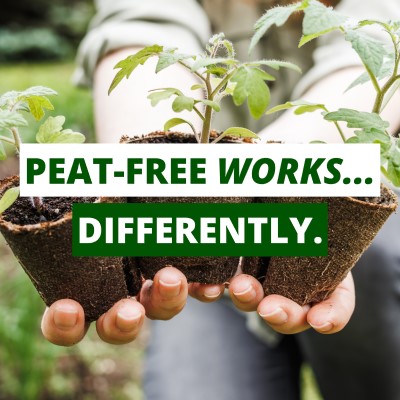Peat-Free Growing

The push for peat-free gardening is growing stronger, and more and more products are making the switch. But why is this change so important, and how can you get the best results from the peat-free composts now available? Read on to find out.
Why Go Peat-Free?
Peat is great for the planet when left in the ground as it supports wildlife and reduces the impact of climate change.
Peatlands are the world’s largest carbon store, and the emissions that come from harvesting peat are highly damaging to the environment. They are also incredibly valuable as homes for a range of species, many of which are facing extinction from loss of habitat.
Going peat-free can make a real change, helping to protect biodiversity and the environment.
Growing Peat-Free
Here are our top tips for using peat-free compost:
- Check the moisture level by sticking your finger 2cm/1 inch below the surface, or by lifting the pot to gauge its weight. Peat-free compost can feel dry on the surface, even when it has plenty of moisture underneath.
- Keep a close eye on your plants. If they show slower growth, paler leaves, or fewer flowers, start adding a feed to your plant care routine.
- Buy fresh compost each season and store your compost properly. Re-sealing it after use and keeping it in a cool, dry place will protect it from contamination and maintain its quality and effectiveness.
